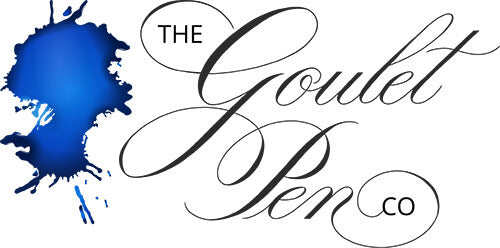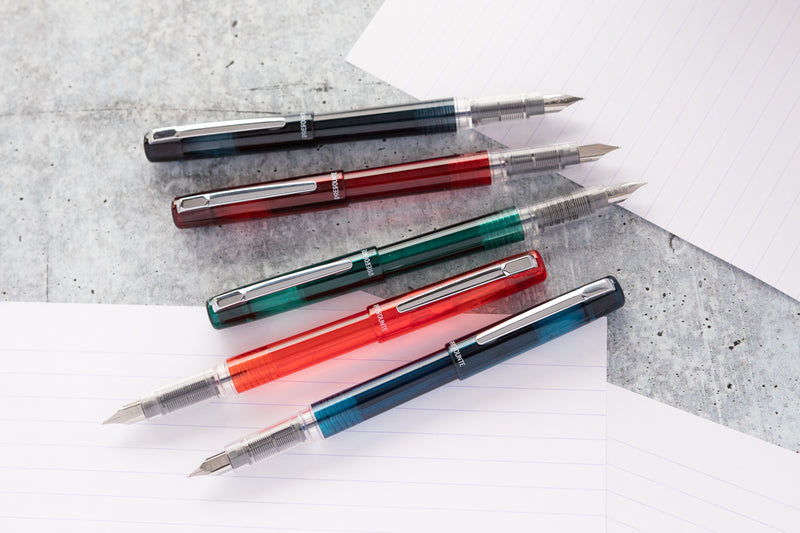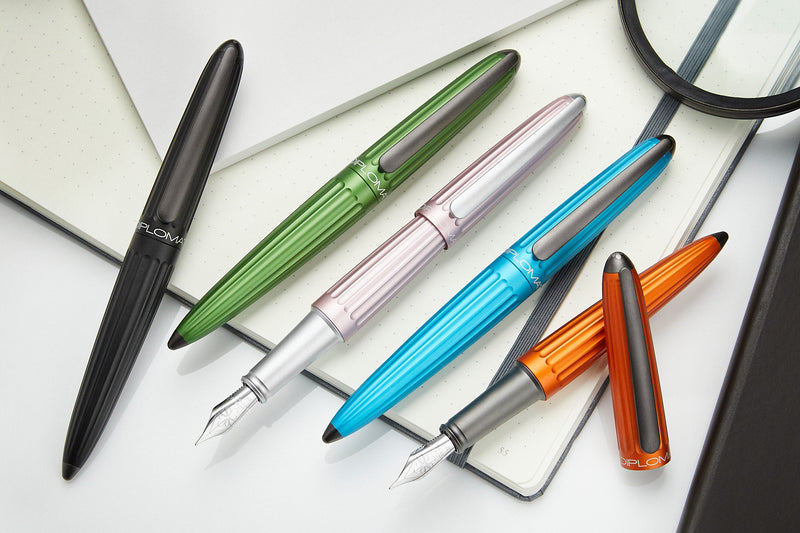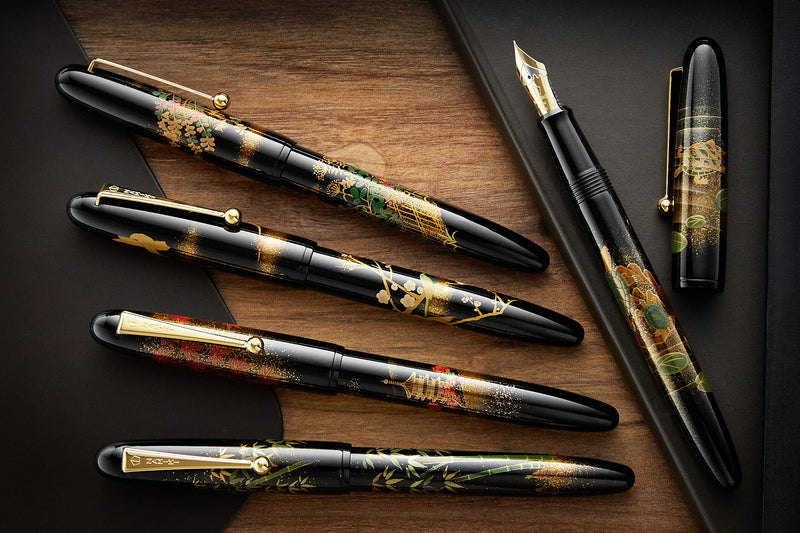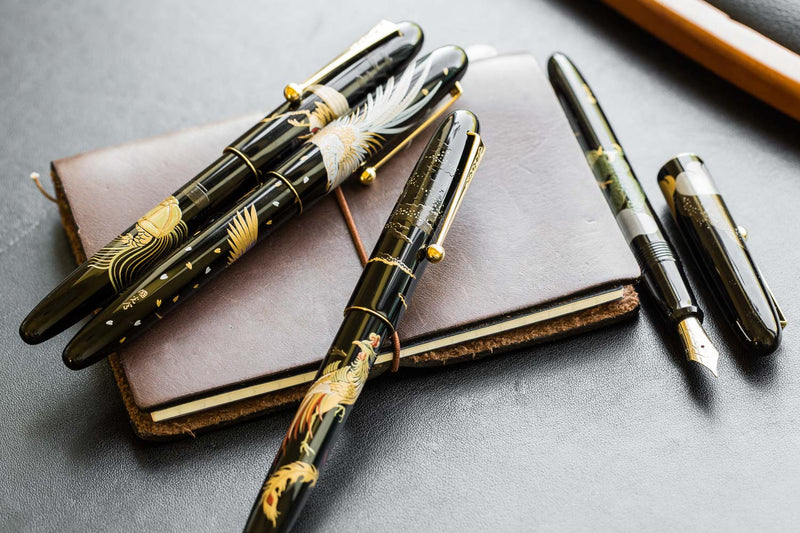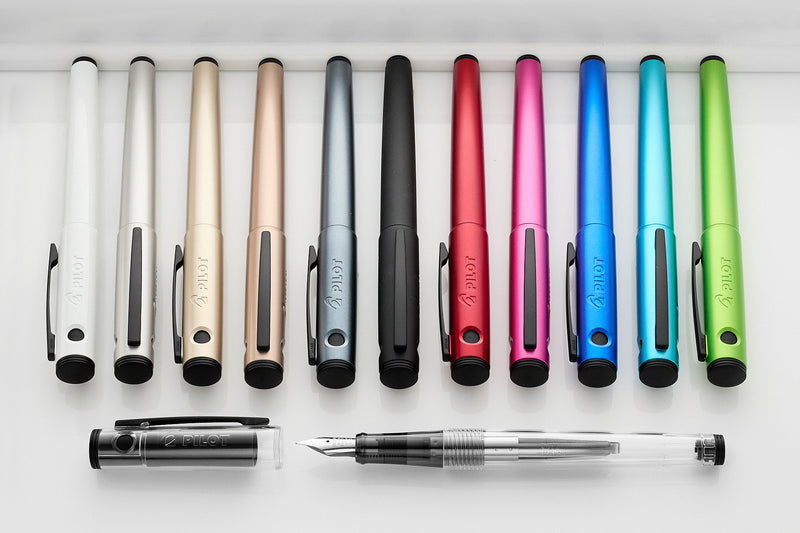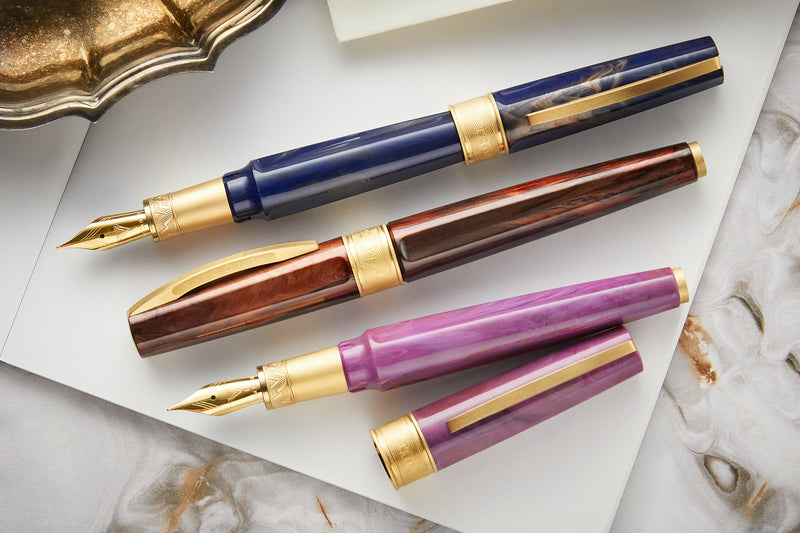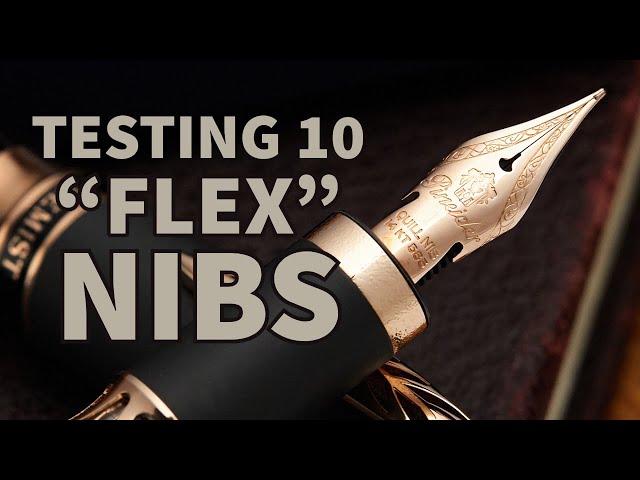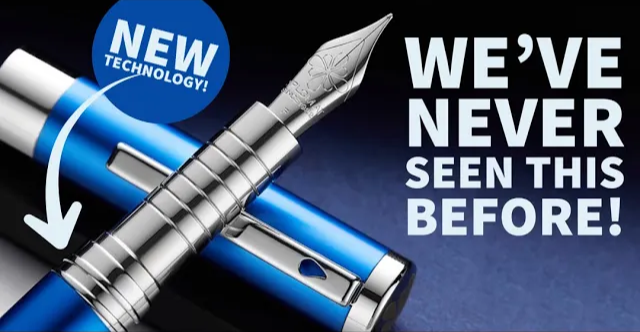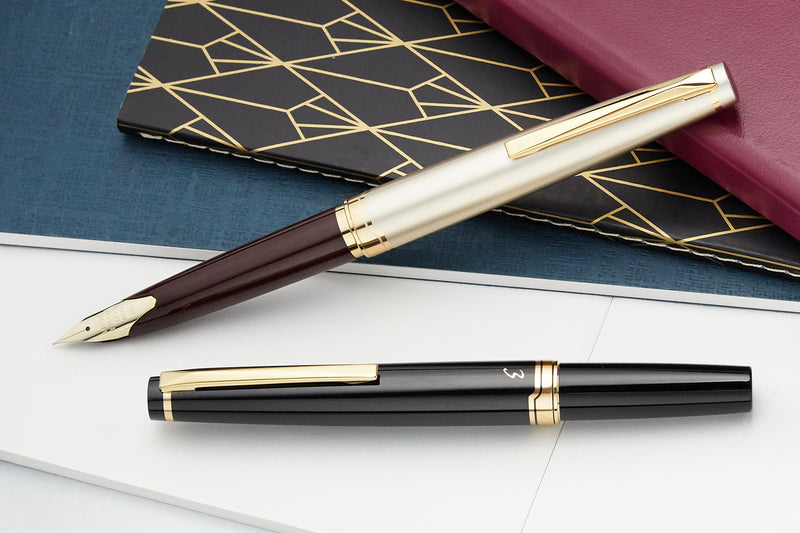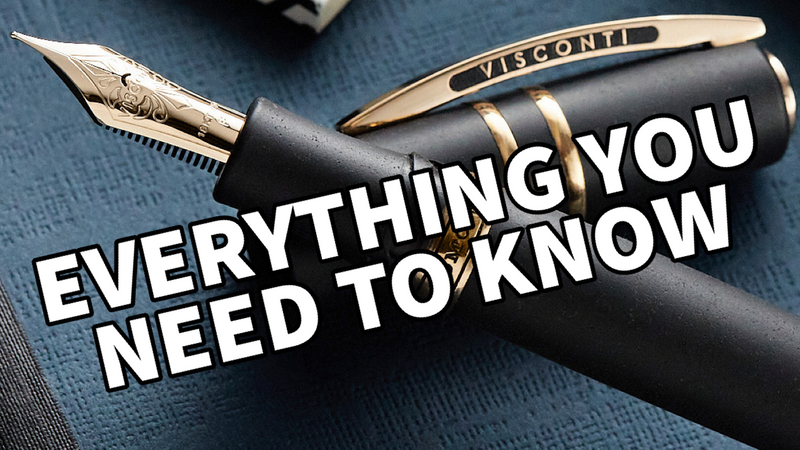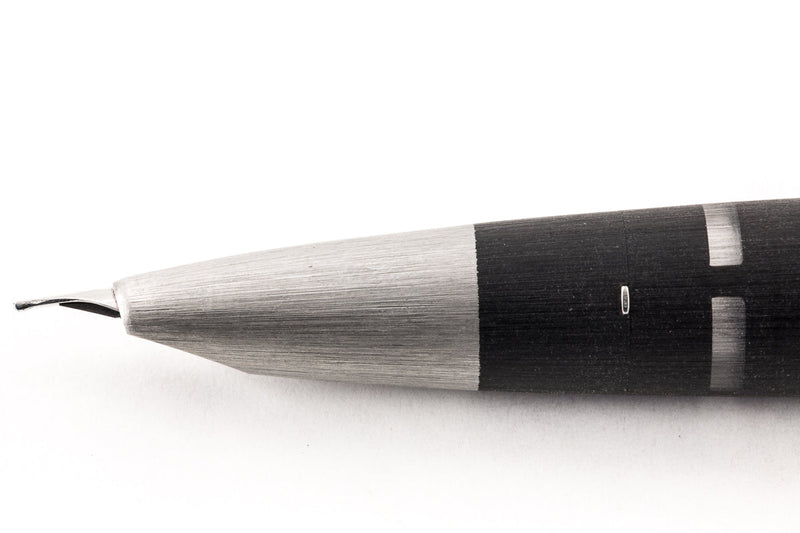Sailor Nibs Overview
Sailor makes some of the highest quality and most consistent gold fountain pen nibs in the world. When we put out our Sailor Overview in early 2020, we touched on the variety of Sailor's standard nibs. I’ve always wanted to dive deeper into each nib and how they perform, so I'll showcase all of Sailor's nibs in detail in this post.
I'm going to share my experience having used the seven standard Sailor gold nib grinds (Extra-Fine, Fine, Medium-Fine, Medium, Broad, Music, Zoom), as well as the three different sizes of nibs (14K, 21K, and KOP 21K) that you see across their various pen models.
Sailor has some specialty grinds that are offered on a very limited basis like the Naginata Togi, but here I'll just go over the ones more commonly available.
Overall Sizes of Nibs
Sailor makes three different sizes of nibs. However, this is not what would commonly be referred to as the “nib size,” as that term refers to the tipping material and how it’s ground, such as fine or broad. Here, I’m talking about the overall proportions of these nibs and the pens they go on.
The Smallest Nib: 14K
The smallest of the three nibs is made of 14k gold and appears on smaller pen models like the 1911S, Pro Gear Slim, and Pro Gear Mini. The exposed length of this nib is 19.2mm, which is about the size of what you’ll see with other pens like the Pilot Custom 74 or a TWSBI 580.
The Larger Nib: 21K
The larger nibs are both 21k gold, so they are a slightly softer alloy. The smaller 21k nibs appear on mid-size pens like the 1911L, Pro Gear Standard, Pro Gear Realo, and Sailor Ebonite Sculpture Pens. The exposed length is 21mm long, just shy of the 23mm length you’d typically find a Pilot Custom 823 or the TWSBI Vac700R.
The Largest Nib: 21K KOP
The largest nib is on the King of Pens 1911, King of Pens Pro Gear, and Sailor Luminous Shadow. This nib is substantial, and the exposed length of this nib is 25.5mm. Few pens have a nib this large; it’s larger than the 23.5mm Namiki Yukari Royale but not quite the size of the 27mm Pelikan m1000 or the Namiki Emperor, which comes in at an exposed length of 31.7mm! That said, the King of Pens is one big, beautiful nib that rests among the finest in the world.
Various limited edition or anniversary pens might have any of these nib sizes, so we do our best to note which size nib those pens have in the product description by referencing which model would have the same nib size.

Sailor Winter Sky Pro Gear fountain pens in three sizes from bottom to top: Slim (14k), Standard (21k), and King of Pen (21k KOP)
Nib Design
The aesthetics of all the nibs include the Sailor anchor logo, a border with some swirly decoration, the carat rating of the nib, and the nib size indication on the side. Sailor began changing the design a few years ago, and now there are 2 different versions.
The older style nibs have the "1911" logo on the face of the nib. Newer nibs don’t have 1911 on them, and the anchor is a bit more contemporary looking. They’re still the same great nibs in terms of their performance. You can see the differences in the below photo. Please note that stock may be mixed for some models.
Sailor nib design - older style (left) vs newer style (right)
Sailor nibs can be found in a variety of colors: all gold, all silver (rhodium-plated), two-tone gold with a silver border, two-tone silver with a gold border, black-ion plated, and rose gold. Whatever the color, know that the nibs are still solid gold underneath and will perform the same no matter which plating is on the surface.
Nib Performance
Sailor is the only fountain pen company currently making nibs in 21k gold. The higher the purity of the gold, generally the softer the nib should feel. That said, several factors go into the feel of a nib and how it performs, such as the thickness of the metal, length of the nib, curvature of the nib, and the shape and taper of the wings. In the case of Sailor, you will notice some difference in the nib feel between 14k and 21k nibs.
In the video, I tested Sailor Manyo Konagi ink with three different pens: a 1911S with a 14k nib, a 1911L with a 21k nib, and a King of Pens with a larger 21k KOP nib, all in medium tip size.
The 14k nib is the stiffest and doesn’t have much bounce. In the video, the 14k nib doesn't show much bounce unless pressed firmly, leading to slight variance in ink flow and line variation. Sailor's 14k nib is consistently similar across models, and tend to be stiffer than most other 14k nibs from other manufacturers.
The tine softness becomes more noticeable in the mid-size 21k nib. While not labeled as "soft" or "flex," I can feel a difference in bounce while writing. The tines respond more to pressure, resulting in increased ink flow without dramatic line variation. This enhances shading and ink saturation, particularly with inks exhibiting sheen and shimmer. This nib feels closer to other 14k nibs you’d experience from other pen brands known for having bouncy nibs.
The largest 21k King of Pens nib continues in that direction, with even more bounce. Because of its softness, it also has the group's wettest flow and the highest degree of ink shading. The nib accentuates the mid-size pen's 21k nib qualities, while providing more springiness, flow variation, and a more expressive feel while writing. This size is my favorite because it is more dynamic, especially with inks that shade, sheen, and shimmer.
To summarize, the smaller 14k is the stiffest and driest of the group, the largest 21k KOP nib to be the softest and wettest, and the mid-size 21k to be somewhere in between.
Nib Grinds
There are seven different standard nib grinds. All 7 are available on the 14k and smaller 21k gold nibs, with a limited offering of only medium and broad on the larger 21k KOP nib.
We’ve done writing samples of all 16 different nib offerings from Sailor in our Nib Nook resource on our site, so you can compare them to each other and every nib we offer on every pen in our store.

Here are my thoughts from the video and writing with each nib size.
Extra-Fine
Sailor's extra-fine nib is incredibly fine, offering maximum drag, feedback, and a toothy texture due to minimal metal-paper contact. While all Sailor nibs tend to be a bit toothy, the EF is the most pronounced. Nevertheless, Sailor's EF nibs consistently produce a uniform line—rare for such a fine nib. However, this nib won't yield much shading, sheen, or shimmer with a thin line. Unlike most other brands, Sailor and other Japanese manufacturers achieve this level of thinness. This nib suits writers who prioritize thin lines over a smooth page feel, as that's the trade-off.
Fine
For many, the fine nib strikes the ideal balance between a thin line and a more enjoyable writing experience. While not entirely smooth, it's less of a compromise than the EF. The increased ink flow adds a touch of character to your writing, like subtle shading. Sailor's fine nib is comparable to a European extra fine, as seen in brands like LAMY and Pelikan.
Medium Fine
This size is an exciting choice for me and a go-to with Sailor. Unique to Japanese brands, it explains why Japanese EF and F nibs appear finer than European counterparts. This medium-fine aligns more with other brands' fine nibs, albeit slightly thinner and less wet. It's a versatile choice for all paper types due to its thinness, while still offering some ink variation. It tends to be one of the more popular sellers.
Medium
I'm beginning to sense the nuances of tighter spacing with a 5mm ruling—nibs are precise and uniform. Ink flows smoothly in the medium nib, resulting in pooling and enhanced shading during cross strokes and figure-8 motions. The areas where ink accumulates are becoming noticeable, yielding substantial ink. The nib exhibits slight flex when pressed firmly, resulting in increased ink flow, more ink saturation, and potentially longer drying times. It effectively displays ink properties and ensures thorough coverage in the scribbles.
Broad
The broad nibs are a snug fit within the 5mm dot grid spaces. The ink appears darker without requiring extra pressure. It enhances the richness of less saturated inks, showcasing ample shading. It writes quietly with feedback. It's not overly wet or uncontrollable, offering universal usability compared to other broad nibs. Careful ink selection matters, especially if it takes longer to dry. With a velvety dark ink flow and a generally smooth nib, Sailor nibs still tend to have a toothier feel.
Music
Fascinating. Essentially, the music nib is a stub nib. Some have three tines; others, like this one, have two. What sets a music nib apart from a regular stub nib is its specific grind, optimized for steep angles. This angle significantly influences cross strokes, thick downstrokes, and ink shading, highlighting even the slightest variations between heavy and light pressure.
Zoom
No other brand offers the Zoom. It's wet and broad. The grind's design links the line width to your writing angle: higher angle, thinner line; lower angle, thicker line. This grants versatility akin to a broad nib with ample ink, shading, and coverage. It's exceptionally smooth, with angle playing a vital role. The Zoom is exclusive to Sailor and, while enjoyable and practical in certain scenarios, it's not a typical choice.
Summary
Sailor fountain pens have some great gold nibs in three sizes and seven nib grinds, and I hope now you feel inspired to check them all out. They also have a line of steel nib fountain pens available in their Compass collection if you're not ready to spring for a gold nib pen.
Additional Resources:
- Sailor Brand Overview
- Nib Nook - our writing sample comparison tool
- Pen Plaza - our pen size comparison tool
- Fountain Pen 101: Nibs Explained
